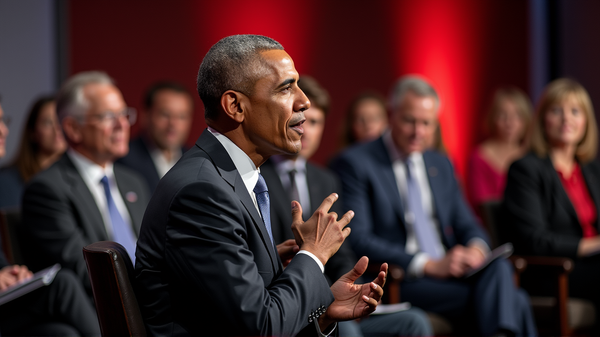U.S. Trade Policy at the Brink: A Protectionist Path Forward?
Explore the implications of U.S. protectionist trade policies that could reshape global markets and economic landscapes.

In the ever-evolving landscape of global economics, the United States stands at a crucial crossroads. As political tides shift, the potential return to protectionist trade policies is looming large, prompting a wave of uncertainty across international markets. Businesses and consumers alike are anxiously evaluating how these decision points will shape trade and market trends worldwide.
Navigating the Tariff Terrain
Tariffs have long been a tool of choice, imposing both new opportunities and challenges for industries. Under the Trump administration, tariffs became a frontline approach to addressing issues like intellectual property theft and trade imbalances. A second term could see an even broader application, where industries such as steel, aluminum, automotive, and high-tech sectors become focal points of the tariff-driven strategy. However, the accompanying risks, such as escalating costs and supply chain disruptions, paint a complex picture.
The Ripple Effects of Protectionism
As protectionist policies carve their path through the global economy, industries are witnessing a reorientation of supply chains and market dynamics. Consider the American steel and automotive sectors. Initially beneficiaries of reduced foreign competition, they face the looming shadow of inflated component costs. Industries highly dependent on imports, such as electronics and retail giants, brace for increased procurement expenses, while global trade itself hangs in the balance of retaliatory tariffs.
Winners and Losers Amidst Policy Tumult
The scales of protectionism tip unpredictably, with domestic industries anticipating a shield of tariffs, while others navigate the murky waters of elevated costs. For companies, the outcome depends on how swiftly they can adapt. Giants like Walmart and consumer electronics manufacturers stare at a horizon of increasing operational expenditures. It’s a double-edged sword where the struggle for balance becomes a race of innovation and resourcefulness.
Global Implications and the Broader Trade Paradigm
The aggressive stance on tariffs not only challenges economic norms but also signals a re-examination of globalization. Nationalism and economic resilience are taking precedence, urging countries and corporations to reevaluate dependencies and alliances. With immense pressure on traditional exporters to U.S. markets, the blueprint of industrial strategy hangs in the balance, demanding creativity and quick adaptation in this new era of trade relations.
Strategic Shifts and Future Outlook
Looking ahead, the trajectory of U.S. trade policy remains unpredictable. Whether through bold movements towards reshoring or nearshoring or navigating through a potential trade war, the stakes are high. Companies that thrive will be those with diversified supply chains and a nimble, proactive strategy that addresses the volatile complexities of a protectionist economy. Investors, meanwhile, should stay vigilant, keeping a close eye on developments and the nuanced statements from political leaders.
The path forward remains uncertain, echoing a larger question: how will the U.S. balance its domestic policies with an interconnected global economy? As this story unfolds, only time will reveal the true impact of a potential protectionist future on the fabric of international trade.





